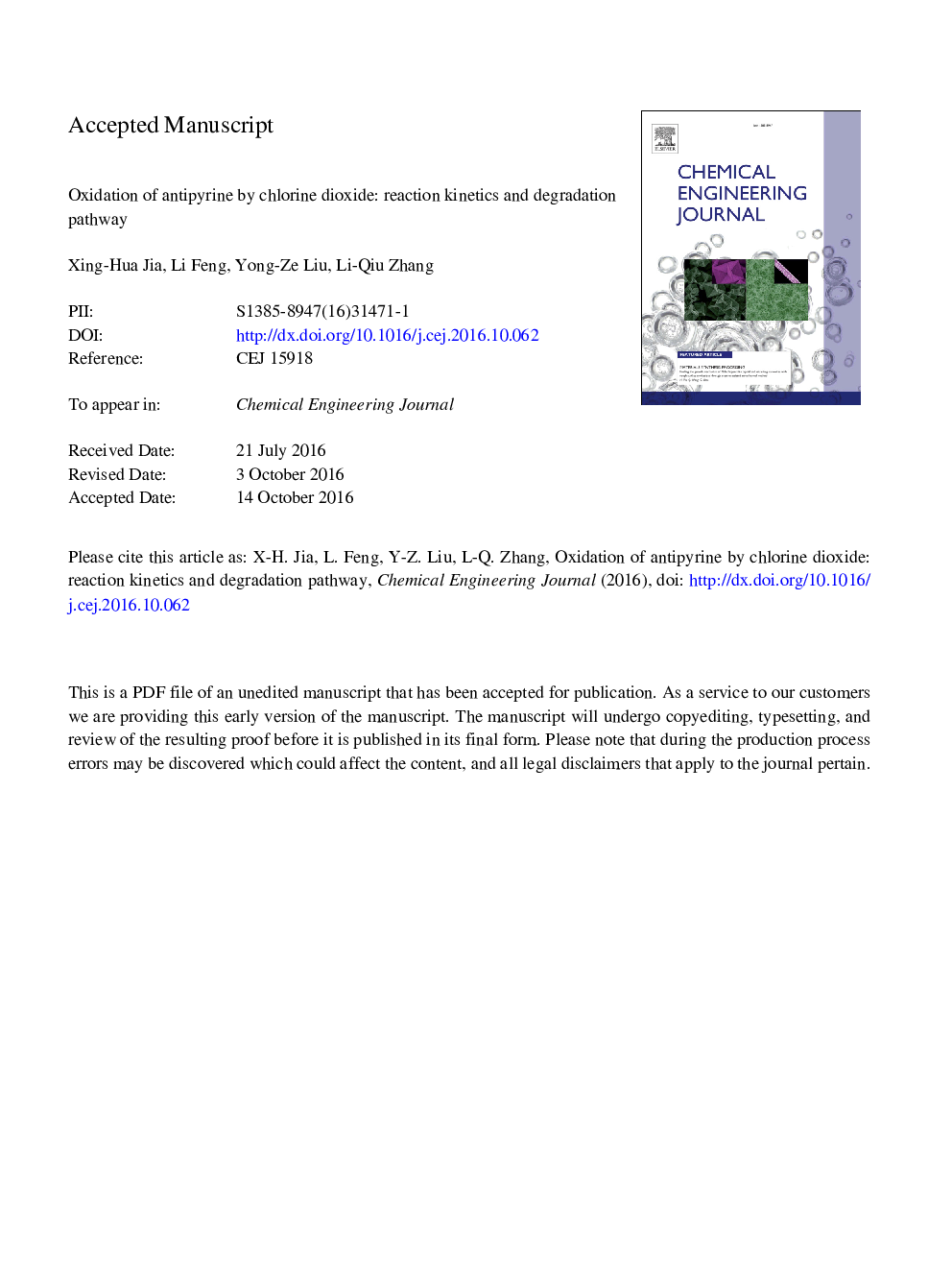| کد مقاله | کد نشریه | سال انتشار | مقاله انگلیسی | نسخه تمام متن |
|---|---|---|---|---|
| 4763624 | 1422969 | 2017 | 22 صفحه PDF | دانلود رایگان |
عنوان انگلیسی مقاله ISI
Oxidation of antipyrine by chlorine dioxide: Reaction kinetics and degradation pathway
ترجمه فارسی عنوان
اکسیداسیون آنتی پریین توسط دی اکسید کلر: سینتیک واکنش و مسیر تخریب
دانلود مقاله + سفارش ترجمه
دانلود مقاله ISI انگلیسی
رایگان برای ایرانیان
کلمات کلیدی
ضد عرق، دی اکسید کلر، سینتیک واکنش مسیر تخریب،
موضوعات مرتبط
مهندسی و علوم پایه
مهندسی شیمی
مهندسی شیمی (عمومی)
چکیده انگلیسی
Antipyrine (ANT, phenazone), a widely used anti-inflammatory analgesic in medical treatment, has been frequently detected in the aquatic environment. Chlorine disinfection process is thought as an efficient way to remove ANT, however, the potential risks of chlorine disinfection by-products (DBPs) such as trihalomethane (THMs) and haloacetic acids (HAAs) cannot be ignored. Chlorine dioxide (ClO2) has been adopted as an effective alternative disinfectant of chlorine to reduce THMs and HAAs formation. In this work, the reaction kinetics and degradation pathway of ANT with ClO2 were studied to investigate the feasibility of using ClO2 as oxidant to degrade ANT. Experimental results demonstrated that ANT oxidation by ClO2 followed second-order kinetics, and the second-order rate constant (kapp) was determined to be 4.8Â ÃÂ 10â1Â Mâ1Â sâ1 at neutral pH. Higher pH could accelerate the reaction when pHÂ <Â 9, while strong alkaline environment (pHÂ >Â 9) might significantly slow down the oxidation process. Structural change during the reaction was proposed with the assistance of Fourier transform infrared spectroscopy (FT-IR), CC and CN bond of ANT were vulnerable under electrophilic attack of ClO2. Degradation pathways of ANT with ClO2 were suggested based on the main intermediate products. ANT was firstly transformed into ANT-Cl through single-electron-transfer (SET) and substitution reaction. Further oxidation of this intermediate product involved ring-opening reaction and de-carbonyl reaction.
ناشر
Database: Elsevier - ScienceDirect (ساینس دایرکت)
Journal: Chemical Engineering Journal - Volume 309, 1 February 2017, Pages 646-654
Journal: Chemical Engineering Journal - Volume 309, 1 February 2017, Pages 646-654
نویسندگان
Xing-Hua Jia, Li Feng, Yong-Ze Liu, Li-Qiu Zhang,
